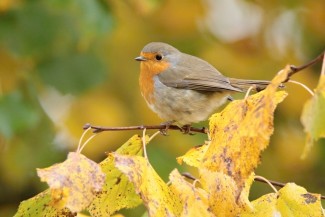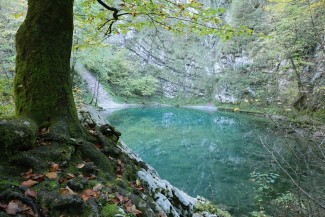Slovenia
Back to full map of interestsList of locations
Slovenia
Slovenia is characterized by a high degree of natural diversity despite its relatively small size. In addition to its varied geology and topography, Alpine, Mediterranean, and continental climates converge within its territories. Slovenia is one of the most densely forested countries in Europe, with forests covering 58.1 % of the country’s surface. A mere 36 % of the country was forested in 1875, but constant increases in forest coverage, mostly due to forest encroachment on farmlands, continued until about 2010 and it has remained relatively constant ever since.1 Of the 1,193,750 ha of forested land, only 9,508 ha (<1 %) are strictly protected, with many of the fragments recognized as old-growth forests.2 Ždrocle–Snežnik (794.4 ha) and Krokar (74.5 ha) are also parts of the UNESCO network of “Ancient and Primeval Beech Forests of the Carpathians and Other Regions of Europe”.3 Additionally, 37.5 % of Slovenia is made up of Natura 2000 sites, of which forests comprise 71 % of all the sites.4
Around 70 native tree species can be found in Slovenia.5 Yet most of the forest sites (63.2 %) are various types of beech-dominated forests or forests dominated by a mixture of beech and other species (silver fir, Norway spruce, sessile oak, sycamore maple). Codominant forests of sessile oak and European hornbeam represent 8.6 % of all forests, silver fir forests 6.5 %, acidophilic Scots pine forests 4.7 %, spruce forests 3.7 %, lowland forests of pedunculate oak, black alder, and various willow species 2.9 %, mugo pine woodlands 2.9 %, and thermophilic forests, dominated mostly by European hop-hornbeam, various species of oaks, Scots pine, black pine, manna ash, and various species of rowans, 7.7 %.6 For this project, we focused on the thermophilic sites, which tend to be dry and hot, because remarkably little is known about their structure and dynamics, the role of disturbances, and life histories of the dominant species. Growth limitations related to high temperatures and low soil moisture are a potential threat to many temperate forests throughout their range, and thermophilic forests already experience these harsh growth conditions, which suggests their potential importance in a warming climate and encourages further research into their development. In general, very little research has been done in thermophilic type forests in Europe, presumably due to their low economic value, yet these forests are important not only for biodiversity, but, according to models based on global data, they are predicted to expand as the climate warms.
We focused on two thermophilic forests within the Strug (39.3 ha) and Kobile (231 ha) forest reserves. Kobile is on the Slovenian side of the Gorjanci Ridge, encompassing the watershed of the Kobila stream. Strug is a part of Idrijsko-Cerkljansko hribovje. The vegetation in the reserve is very diverse, ranging from willow and alder sites around stream beds to sites dominated by thermophilic vegetation on south-facing slopes. Focal tree species were European hop-hornbeam, sessile oak, Turkey oak, manna ash and whitebeam. The area of study covered the northern, south-facing steep slopes (30° to 50°) lying 500-850 m a.s.l. with dolomite as the main parent rock. The sites are classified as Querco-Ostryetum carpinifoliae and Erico-Ostryetum plant associations. Similar to the vegetation of Kobile, the smaller Strug forest reserve spans from thermophilic vegetation on south-facing slopes to beech and mixed beech-fir forests on the ridge. We focused on the south-facing slopes 500-650 m a.s.l., where limestone represents most of the parent material. The site is classified as Fraxino orni-Ostryetum. Forest species composition is similar to the thermophilic sites in Kobile with the noted absence of oak species, whereas large-leaved lime and Norway maple were relatively abundant.7 Both of the forest reserves are relatively remote, not approachable by roads or skidding trails, and they were therefore very unlikely to have ever been affected by intense land-use practises.
| # | Location | Name | |
|---|---|---|---|
| 1. | Gorjanci |  | Kobile |
| 2. | Idrijsko-Cerkljansko hribovje |  | Strug |